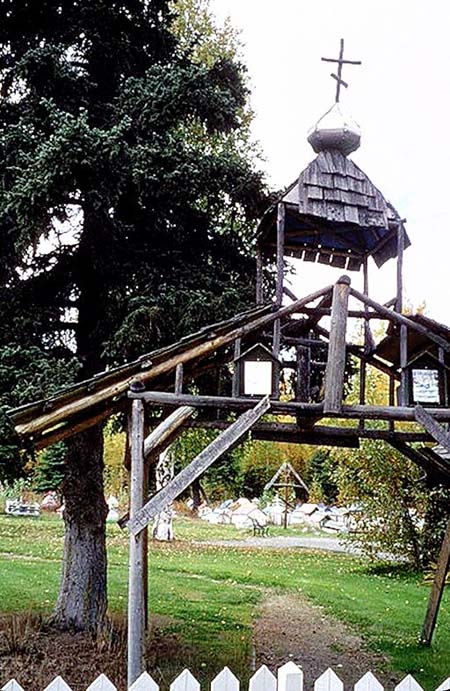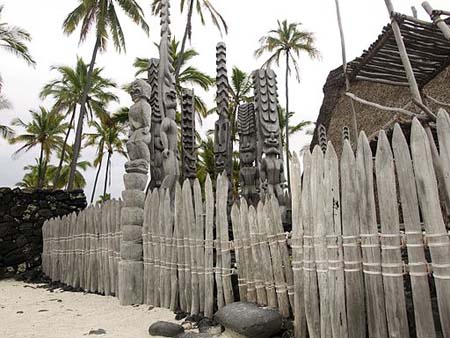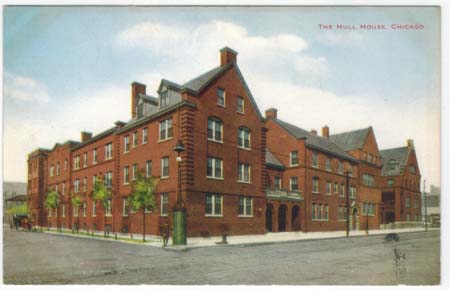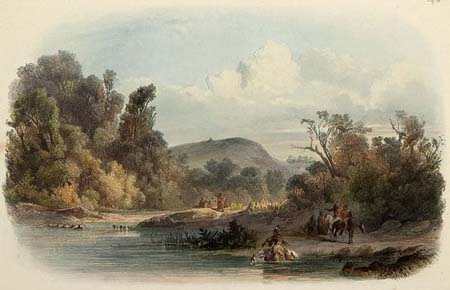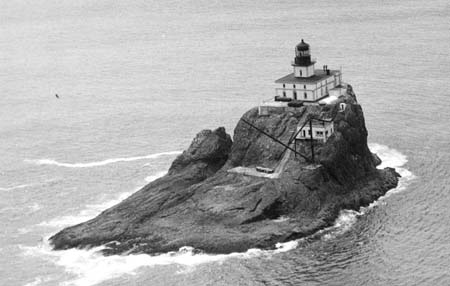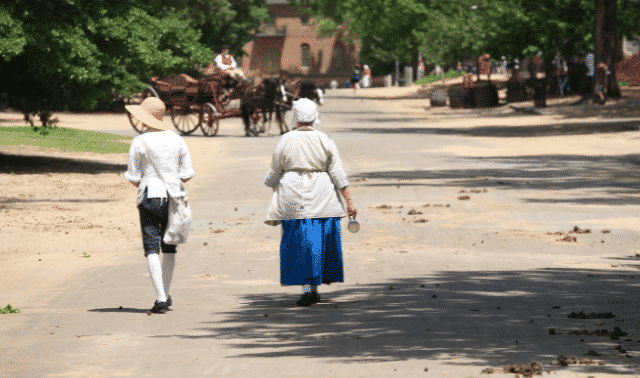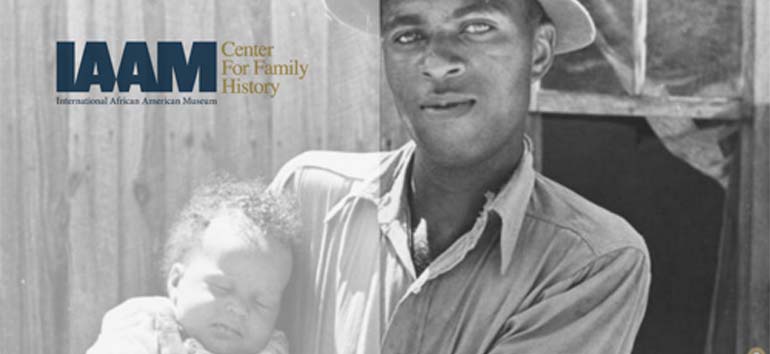
Ever strolled through an old cemetery and noticed something move in the corner of your eye? While touring a historical museum, have you caught a glimpse of someone in period costume and wondered, “Is that a re-enactor or… something else?” When you frequent historic places, you’re also likely to encounter the spirits that tend to inhabit them. Sometimes they’re “Caspers”: friendly ghosts who watch over their former homes or favorite hangouts. In other cases, the spirits are tortured souls or evil presences who frighten the living. If you’re ready to mix a little Halloween into your next trip, add one of these 15 haunted historic places to your itinerary.
1. Alabama: Interstate 65 (Evergreen)
A section of this modern thruway is haunted. Engineers built the highway over sacred Creek Indian burial grounds, and the hills around Evergreen remain the Creeks’ spiritual home. Many believe that their ghosts haunt the white man’s highway that runs through the middle of it. The Creeks loved the land so much that they said goodbye to every tree and hill when they were forced to leave the area in the 1830s. Of the 15,000 Creeks who marched to a reservation in Oklahoma, more than 3,500 died along the way. Between 1984 and 1990, there were 519 accidents, 208 injuries and 23 deaths on this 40-mile stretch of highway. The road is even, straight and well-maintained, but the accident rate is well above average.
This “Haunted Highway” is a 40-mile stretch of I-65 that runs between Evergreen in Conecuh County and Greenville in Butler County, in south central Alabama.
2. Alaska: Eklutna Village Historical Park (Anchorage)
The Native American cemetery here is haunted by ghostly wanderers: the spirits of Eskimo ancestors searching for their belongings. The Eklutna religion is a blend of Eskimo beliefs and Russian Orthodox teachings introduced by Russian settlers in 1741. It holds that when a person dies, his spirit wanders the earth for 40 days and 40 nights, searching for his earthly possessions.
To keep the spirits confined to the cemetery, the Eklutna build colorful miniature houses on top of the graves. Each structure is topped with the distinctive cross of the Russian Orthodox Church. The mini-houses are painted with family colors and contain personal items of the deceased, such as cups, plates, spoons, a comb, a pipe or even a rifle or camera.
Anchorage is on the Gulf of Alaska, and the park is just east of the city.
3. Colorado: Denver Courthouse (Denver, Colo.)
The doors of hell opened on the second floor here in 1900. At 3 a.m. every night for nearly a week, the ghosts of departed souls walked the halls, always accompanied by the overpowering stench of brimstone. Not just one, but dozens of apparitions were reported by night watchmen and janitors. Many were identified as deceased persons. One of the ghosts was a courthouse elevator operator who had fallen to his death down the elevator shaft. The sulfurous scenes drove two men to quit their jobs and move out of the city.
The courthouse is on the corner of 16th Street and Tremont Avenue.
4. Delaware: John Dickinson Plantation (Dover)
The ghost of lawyer John Dickinson haunts his former home. Called “the penman of the Revolutionary War,” Dickinson wrote many essays supporting the Colonies. Today, his ghost is still busy writing. Tape recordings made in the den have reportedly captured the scratching sounds of a quill pen on parchment, as well as other unexplainable noises. Dickinson’s ghost still takes afternoon naps in his bedroom, where the sheets are sometimes found rumpled for no discernible reason.
Dover is in Kent County in central Delaware. The Dickinson Mansion is just a few miles southeast of Dover, near the Kitts Hummock Road.
5. District of Columbia: Ford’s Theatre
Actors standing near a line at left-center stage in Ford’s Theatre feel an icy-cold presence. Many become nauseated and nervous, forgetting their lines and trembling involuntarily. Hal Holbrook in his Mark Twain recital and Jack Aronson in his evening with Herman Melville are just two actors who admitted to the odd sensations. The effect is said to be caused by psychic impressions left by John Wilkes Booth, as he zigzagged across left-center stage with a broken leg after assassinating Abraham Lincoln on April 14, 1865.
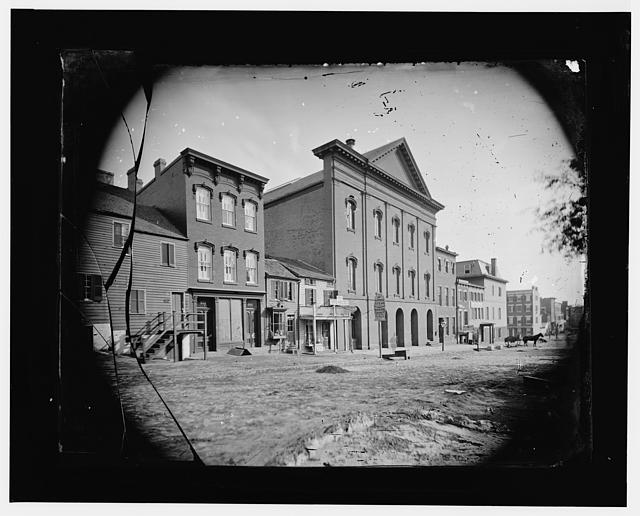
A photo taken by respected photographer Mathew Brady showed Booth’s transparent figure standing in box seven, where the Lincoln party sat the fateful night. The theater was then closed and used for storage. In 1893, 22 federal employees died in Ford’s Theatre when a ceiling collapsed on top of them. The theater reopened in 1968, and since then Booth’s ghost has been reported by actors, stagehands and theatergoers.
The theater was renovated in 1968 and opened as a playhouse and museum.
6. Florida: Audubon House (Key West)
The apparition of naturalist artist John James Audubon has been seen in broad daylight on the porch of this house. Some speculate that his tall ghost, dressed in a ruffled shirt and long jacket, has returned to reveal his true identity. Recent evidence and confessions by his family members unveiled a startling claim about Audubon: He is said to be the son of King Louis XVI and Marie Antoinette of France.
During the French Revolution, just after his mother was beheaded on the guillotine, the 9-year-old boy was smuggled out of prison and legally adopted by a woman named Jean Audubon, who brought the heir to the French throne to America. (He was said to have died of tuberculosis in a Parisian monastery.) John James Audubon renounced all claims to the throne on instructions from his adopted father, who feared for the dauphin’s safety.
Audubon House is a museum operated by the Florida Audubon Society, off US Highway 1 in the Florida Keys.
7. Georgia: Woodlands Estate (Adairsville)
The ruins of this Gothic mansion testify to the curse that followed the Barnsley family for more than a hundred years. The mansion was built by Godfrey Barnsley in 1844 on a knoll that Cherokee Indian legends said would bring tragedy to anyone who lived there. Despite the warnings of local townsfolk, the family moved onto the magnificent estate, which they called Woodland. Within months, Godfrey’s wife, Julia, died from a lung infection. Not long afterward, their infant son followed her to the grave. In 1858, one of Godfrey’s daughters died at Woodland, and in 1862, one of his sons was killed by pirates during a trip to China. The house was ransacked by Union soldiers in 1864, and several of Godfrey’s friends and relatives ended up buried on his property during the Civil War. One was Col. Robert Earle, who was killed on the property when he tried to warn the Barnsley family that the Yankees were coming.
Godfrey Barnsley deserted the cursed land and moved to New Orleans, but one of his daughters, Julia Baltzelle, stayed on with her husband. In 1868, he was killed by a falling tree on the property. Godfrey died in 1873 and his body was buried at Woodland, but vandals dug up his grave and cut off his hand for use in voodoo rites. Julia’s daughter Adelaide was living in the mansion in 1906 when a tornado tore off the roof and did extensive damage. One of Adelaide’s sons went insane and was confined to the state hospital. In 1935, he broke out and returned to Woodland, where he shot his brother in the chest. The mortally wounded man died in his mother’s arms in the living room. Woodland is said to be haunted by its unfortunate inhabitants.
The property is now known as Barnsley Gardens. Once deserted and overgrown with weeds and vines, the estate is part of a luxury resort today. The grounds are a historical site just outside Adairsville in Bartow County, in northwest Georgia off of Interstate 75.
8. Hawaii: Pu’uhonua o Hōnaunau National Historical Park (Hōnaunau)
Huna, an old Hawaiian religion, was very hard on sinners. Anyone breaking the laws, called kapu, was put to death. If the sinner could reach a temple before being killed, however, he could work off his sins there. This park is called Pu’uhonua o Hōnaunau or “City of Refuge,” because the largest of Huna temples was here. Although the kapu laws were abolished in 1819, It is said that the ghosts of some poor souls are still trying to reach the gates of the sanctuary.
Pu’uhonua o Honaunau National Historical Park is located off Highway 11 between the towns of Hōnaunau and Hookena on the southwestern coast of Hawaii Island.
9. Illinois: Hull House (Chicago)
This landmark building, constructed in 1856 by Charles Hull, was the alleged refuge of an infamous “devil baby.” The child, born to a devout Italian woman and her atheist husband, was said to have hooves and cloven feet, pointed ears and horns, scale-covered skin and a long tail.
In 1913, the father brought the “miniature Satan” to Hull House, a welfare organization run by Jane Addams, and asked them to take in the unruly creature. Rumors spread quickly, and in just six weeks hundreds of people traveled to Hull House to see the devil child. Addams steadfastly denied its existence, although some said she was only trying to protect the infant. Reports continue to this day of a wild creature that looks out the upstairs-left attic window and of manifestations of luminous ectoplasm that ascend the attic stairway.
Hull House moved to larger quarters in 1963, and the original structure was turned into a museum.
10. Indiana: Highland Lawn Cemetery (Terre Haute)
When John Heinl died in 1920, there was an unexpected complication at his grave site: His constant companion, a bulldog named Stiffy Green, could not be pulled away from his master’s tomb. The green-eyed dog took up a post outside his master’s mausoleum and refused to let anyone near it. For many weeks, exposed to all types of weather, the animal stood his ground. But the trauma proved too much, and one morning Stiffy Green was found dead next to a pillar at the entrance to the Heinl Mausoleum.
Today, if you peer through the bronze grill of the mausoleum, you will see Stiffy sitting next to the crypt. Heinl’s wife had the dog stuffed and placed him next to her husband for all eternity. When vandals shot at the stuffed animal, she had a statue made to replace it. Sometimes, just after dark, people see the figure of John Heinl and his bulldog strolling through the grounds. They even hear his low voice, hushing his faithful companion.
Terre Haute is in western Indiana at the junction of I-70 and US Highway 41. The cemetery is east of town.
11. Kentucky: Bobby Mackey’s (Wilder)
Malevolent spirits roam this 1850s building, now a popular nightclub. At one time, the structure was a slaughterhouse, and a deep well was dug in the basement to collect animal blood and body fluids. When the slaughterhouse closed, satanists used the well of blood for rituals. In 1896, two devil worshippers beheaded a woman named Pearl Bryan and used her head in their ceremonies. Before they were hanged, the men were offered life sentences in exchange for disclosing the whereabouts of the missing head, but both refused, claiming that to do so would bring down the wrath of the devil himself.
The cursed building was a speakeasy in the 1920s, and several unsolved mob murders added more violence to the already diabolic ambiance. So far, 29 witnesses have signed affidavits testifying to ghostly phenomena on the property, and an exorcism on the premises failed to halt the harrowing activity.
Wilder is in Kenton County, across the Ohio River from Cincinnati and just south of Covington on Highway 9.
12. Nebraska: Blackbird Hill (Omaha Indian Reservation)
The ghostly screams of a woman are heard here every Oct. 17. The woman was stabbed to death by her jealous husband in a cabin that stood at the top of this hill in 1849. The woman wanted her husband to release her from her vows so she could marry an old sweetheart.
In a fit of rage, the man slit her throat, and her bloodcurdling scream is said to linger on. Her lover carried her body up the hill and jumped with her into the river below. On the path where her blood spilled, grass will not grow to this day. Her screams are said to be heard every year on the anniversary of her death. Although the sizable crowd of people who gathered here on Oct. 17, 1933, went away disappointed, her scream has been reported most other years.
The reservation is in northeastern Nebraska, west of US Highway 75. Blackbird Hill is north of Decatur along the Missouri River.
13. Oregon: Tillamook Lighthouse (Tillamook)
This lighthouse was built in 1880 on top of a jagged rock that local Native Americans considered to be possessed by evil spirits. A few weeks before the cornerstone for the lighthouse was laid, 25 people lost their lives when several fishing boats sank at the mouth of the Columbia River during a storm. Witnesses reported seeing a ghostly boat sail through the floating wreckage, as if collecting the souls of those who died.
Lighthouse keepers at Tillamook started reporting “low, chilling groans from the stair cylinder leading to the lantern,” and the place soon gained a reputation for being haunted. In the 1950s, a coast guard crew reported sighting a ghost ship in the fog immediately below the lighthouse. The lighthouse was abandoned in 1957. Since 1980, it has been used as a depository of cremated human remains.
The Tillamook Lighthouse is on Tillamook Rock, near Tillamook Head. The area is located on the Pacific Ocean, about 20 miles south of the mouth of the Columbia River in the northeast corner of Oregon.
14. Pennsylvania: Witches’ Hill (Berks County)
What we know today as crop circles were called Hexen Danz by the Pennsylvania Dutch. The flattened circles of wheat were blamed on dancing witches. This mountain was where the witches gathered, especially on May 1, or Walpurgis Nacht. Their phantoms, along with strange balls of light, are still seen on this hilltop, which locals call Hexenkopf, or Witches’ Head.
The 800-foot-high mountain crest runs between Virginville and Windsor Castle in Williams Township. The area is west of Allentown and north of Reading.
15. Wyoming: Oregon Trail (Laramie)
The ghost of a girl dressed in green velvet, riding a black horse, is seen at regular intervals galloping eastward on this old trail. Every seven years since the early 1800s, she has been spotted wearing a feathered hat on a black stallion, which she urges on with a jeweled whip. In 1871, a cavalry lieutenant from Fort Laramie tried to chase her down, but he was never able to catch up with the phantom.
Legend says she is the spirit of a fur trader’s daughter, who got lost on horseback in the area in 1790. Despite the warnings of her father, the headstrong girl went galloping out of the stockade to explore the countryside. The army bought the fur-trading outpost in the 1840s. Since then, homesteaders, soldiers, cowboys and Oglala Indians have all reported seeing the girl’s apparition.
The “Galloping Ghost of Laramie” usually appears between Fort Laramie and Torrington near the old Oregon Trail, now US Highway 26.
A version of this article appeared in the November 2002 issue of Family Tree Magazine.
Updated: October 2021

